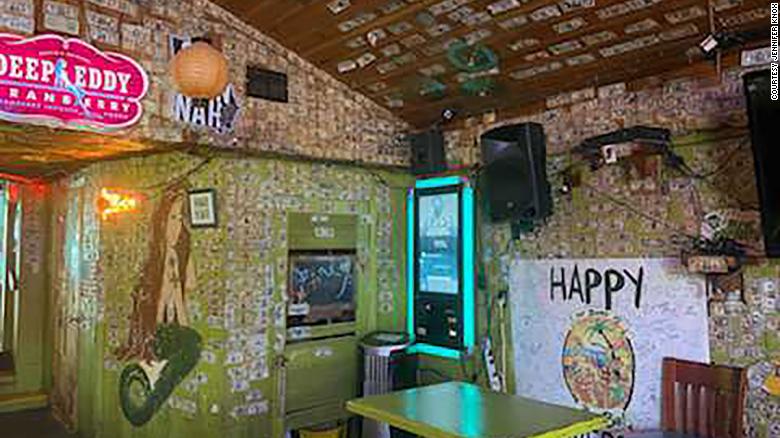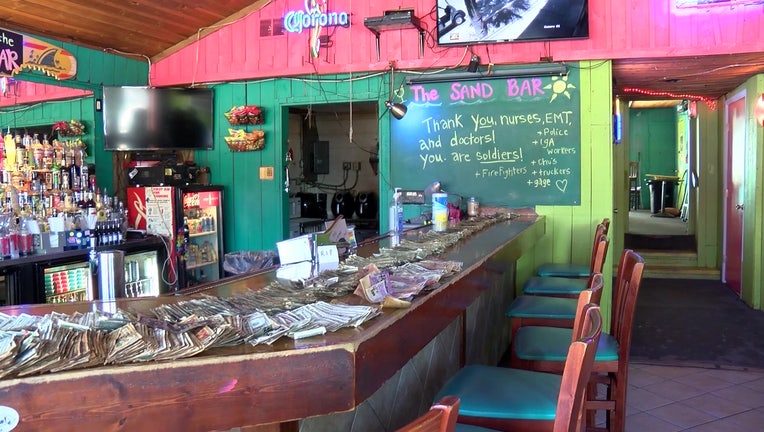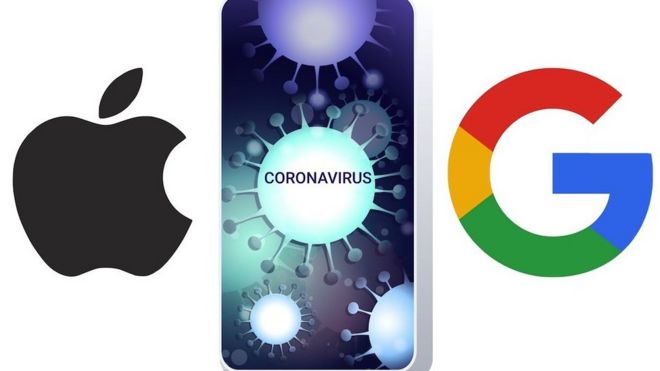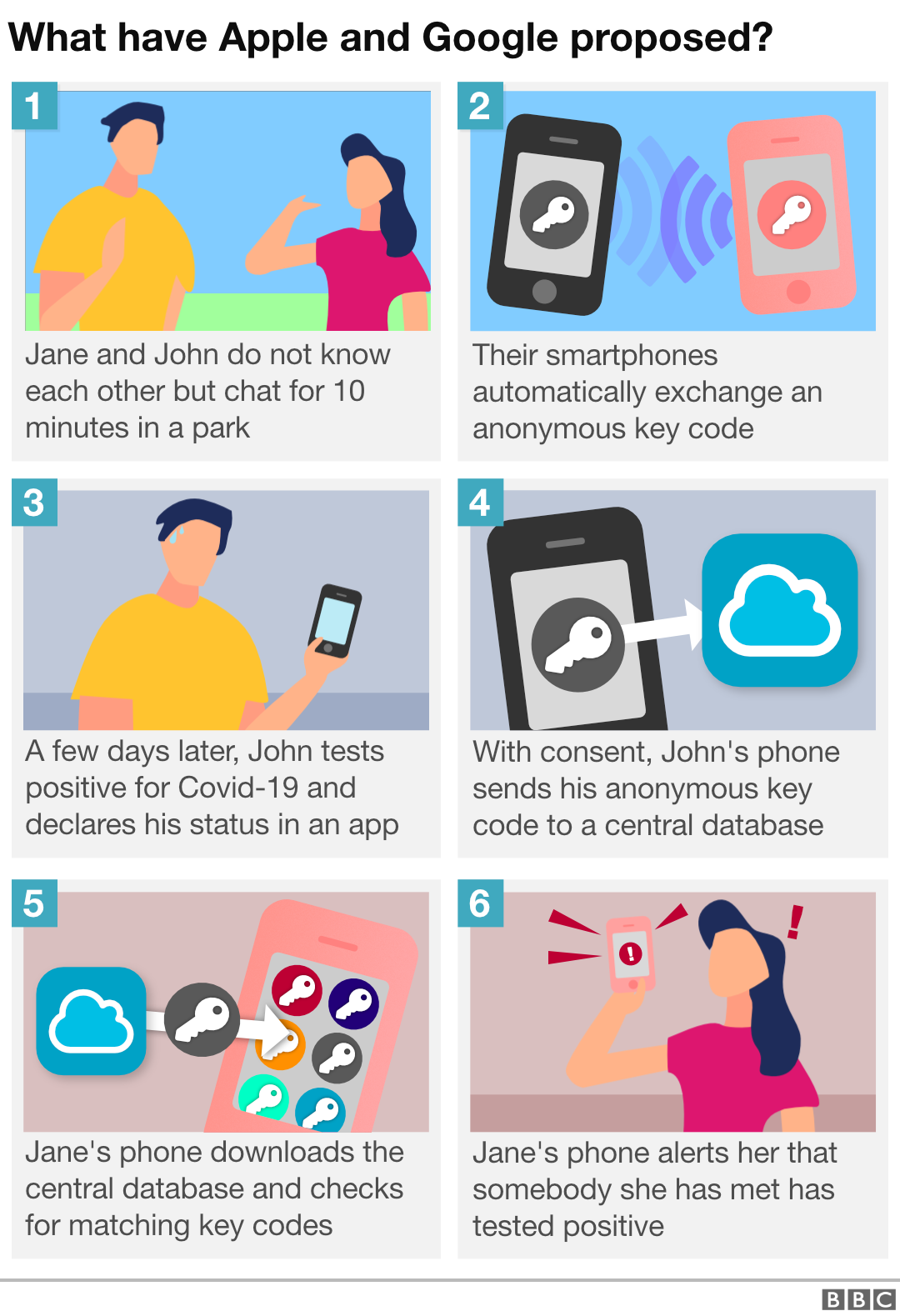You can also watch this video by clicking on the Play Button
4/26/2020
4/24/2020
Jogging in Paris

First the Paris town hall shut the city’s gyms, on national orders. Next it locked the parks and closed riverside paths. Then it banned running during the day, between 10am and 7pm. This latest ruling was designed to separate joggers from daytime shoppers queuing for essentials on the city’s narrow pavements. But the result has been an evening rush hour, as joggers emerge from confinement all at the same time.
Paris has imposed some of Europe’s tightest rules on outdoor exercise. In Amsterdam or Berlin joggers can run when they like, so long as they respect social distancing. In most regions Italians can go jogging, even if just in a tight circle around their homes. Only Spain has enforced truly drastic rules, having banned all outdoor exercise.
A poll suggests that in normal times only 10% of the French go running regularly. A mere 6m people belong to a gym in France, well below the 11m in Germany or 10m in Britain.
For now, daytime jogging is banned in Paris, but people can still walk—even if only for an hour, around their homes—at any time of the day.
From The Economist (edited)
4/21/2020
4/19/2020
The owner of "The Sand Bar"
Click HERE if you can't watch the video

Part A - Fill in the blanks with the verbs in parentheses, making all necessary changes
Tybee Island, one of Georgia's most popular
vacation destinations, _______________
(depend) on beachgoers to keep the town's economy alive. The
town _______________ (have) a population of about 3,000 people.
Before the pandemic, Jennifer Knox _______________ (walk) into her bar
and _______________ (see) people chatting
while sipping on their drinks and listening to local musicians.
Now, her restaurant, The Sand Bar _______________ (be) quiet, with no customers or employees in sight.
Like many other restaurants, The Sand Bar _______________ (have -close) its
doors after officials ______________________ (order - restaurants - switch) to takeout and delivery only. The restrictions, _______________
(put) in place to
help control the spread of the virus, also _______________ (leave) businesses struggling financially.
For nearly 15 years, patrons_______________ (leave)
their mark on the island bar by _______________ (write) on a dollar
bill and _______________ (staple) it on the walls and ceilings.
Knox, who _______________ (work) as a bartender at the bar for seven years before _______________
(own) it, now _______________
(run) the bar with her
mother, Pam Hessler.
As she _______________ (sit) in her empty bar at the end of March and _______________ (look)
around, she _______________ (realize) there _______________ (be)
an opportunity to help her now unemployed staff.
"We _______________ (sit) there doors locked and I'm like oh my gosh, there's
money on the walls and we have time on our hands. We _______________ (get) this money down”,
she _______________ (tell) CNN, referring to the bar's decor.
Over the next three and a half days, five volunteers gently _______________ (take down) the weathered
money. Some of the currency _______________
(come) from countries
across the globe.
After the bills _______________ (take down), it _______________ (take) about a week and a half to clean them off and get
them counted. In total, $3,714 _______________ (collect)
and the stacks of bills_______________ ( stretch) in piles across
the entire bar counter top.
After _______________ (hear) about Knox's act of giving back, several customers _______________
(donate) to the cause.
In total, Knox _______________ (able - distribute) $4,104 to her staff. Four bartenders and two musicians
each _______________ (give) $600. In the spirit of giving, one of the bartenders _______________
(decide - donate) her portion to
another Tybee Island bartender.
March _______________ (be) the beginning of their busy season coming out of
winter. Now, like everywhere else, their business _______________ (be) on hold, and
Knox _______________ (remain) unsure of what the future _______________ (hold).
When The Sand Bar _______________ (reopen)
and patrons _______________ (return) to have a cold beverage after _______________ (relax) on the beach,
they _______________ (notice) a fresh coat of bright colored paint replacing the
wallpaper of dollar bills.
Knox _______________ (be) unsure if the stapling of the money on the walls
will continue but she _______________ (think) of a different plan for customers to leave their
mark.
Part B - How about asking questions to get the underlined answers?
- Tybee Island relies on beachgoers to keep the town's economy alive.
- The restrictions were put in place to help control the spread of the virus.
- Knox has been running the bar with her mother for 6 years
- Her mother has been working with her for 6 years
- She decided to use the money to help her now unemployed staff.
- It took about 12 days to remove and clean the bills.
- Knox gave $4,104 to her staff.
- Knox's act of giving back inspired several customers who also donated to the cause.
- Yes.
- No.
Part C - Please complete the following sentences
- Tybee Island depends on tourism to keep its economy alive. Anyway, …..
- Since officials ordered restaurants to switch to takeout ……….
- Although Knox is not making any money……..
- As one of the bartenders didn’t need the money…….
- The Sand Bar will open very soon unless …….

Article from CNN (edited)
4/16/2020
4/13/2020
Apple & Google team up to contact trace Covid-19

Apple and
Google are teaming up to allow contact tracing on many of the world’s smartphones. The partnership will
allow an estimated 3 billion people to
opt in to location tracking
through Bluetooth on their smartphones for the purposes of combating the
Covid-19 pandemic.
Users will
be able to receive alerts if they come into contact with someone who tested
positive for Covid-19. The collaboration will require the world’s two biggest
mobile operating systems, Android and iOS, to work together in a way that is
unprecedented.
Both companies
wrote in nearly identical announcements published on their respective
websites:
Across the world, governments and health
authorities are working together to find solutions to the COVID-19 pandemic, to
protect people and get society back up and running. Software developers are
contributing by crafting technical tools to help combat the virus and save
lives. In this spirit of collaboration, Google and Apple are announcing a joint
effort to enable the use of Bluetooth technology to help governments and health
agencies reduce the spread of the virus, with user privacy and security central
to the design.
The
initiative will involve two steps. Next month, both Apple and Google will
release APIs that allow contact tracing through third-party apps released by public
health authorities. Users of both iOS and Android devices can download the
official apps through their respective app stores.
Then, in
the coming months, both companies will build an even broader contact tracing
tool that won’t require users to download a third-party app. Anyone who chooses
to opt in will then have their information shared with government health
authorities and other contact tracing apps.
The use
of such apps to track Covid-19 cases was
first seen in China, and it has been applied to a less extreme degree in other
Asian countries, including Singapore, Taiwan, and South Korea. The general consensus was that data privacy
laws and cultural mores would prevent contact tracing from taking off in the West. That assumption has proved to be
wrong, as governments in the US, UK, and EU have recently embraced the concept.
France will
launch a Stop Covid app for contact tracing. The UK’s
National Health Service is working on such an app that will instantly notify
users of close contacts with people who have tested positive for Covid-19.
Privacy and
civil liberty groups around the world have raised concern over how such
technology, even during an unprecedented public health crisis, will fare in the
hands of governments and Big Tech.
Kurt
Opsahl, general counsel of the Electronic Frontier Foundation, wrote:
Bluetooth contact tracing is a vast improvement
over location tracking with GPS or cell site information, but it still needs
strong privacy and security safeguards. Apple and Google have said they will
protect users’ privacy—we will hold them to their word. Developers must be sure
they are developing apps that will protect and preserve the privacy and
liberties we all cherish.

From Quartz and BBC (edited)
4/12/2020
4/05/2020
The middle finger
 Up yours. Screw off. You suck. Shove it. Get lost. But mostly: Eff you. These are the unmistakable meanings of the simple, crude, and highly effective middle finger gesture. It can be delivered as a sign of anger, frustration, disrespect, derision, rebellion, rejection, or general insult, and may be displayed forcefully, slyly, ironically, gleefully, or jokingly.
Up yours. Screw off. You suck. Shove it. Get lost. But mostly: Eff you. These are the unmistakable meanings of the simple, crude, and highly effective middle finger gesture. It can be delivered as a sign of anger, frustration, disrespect, derision, rebellion, rejection, or general insult, and may be displayed forcefully, slyly, ironically, gleefully, or jokingly.
The use of the middle finger as a rude expression dates back thousands of years; it may be the “most ubiquitous and longest lived insulting gesture in the world”, maintaining its shocking and controversial nature long after whatever symbolism actually inspired it faded into history.
419 BC: An Aristophanes play includes
a character who gestures with his middle finger.
300s BC: Greek philosopher Diogenes
allegedly gives the finger to a crowd waiting to see the statesman and orator
Demosthenes.
1415: According to legend, the
finger is displayed at the Battle of Agincourt.
1886: The middle finger is captured
for the first time on camera in the US, displayed by baseball player Charles
“Old Hoss” Radbourn in a team photo.
1928: The Academy
Award-nominated Speedy features silent film star Harold Lloyd
giving himself the finger in a funhouse mirror, likely the earliest known
appearance in a motion picture.
1968: Crewmembers of the USS Pueblo,
a US Navy ship attacked by North Korea, ruin propaganda prisoner-of-war photos
taken of them by giving the finger.
1974: MAD magazine replaces its
usual cover image featuring the character Alfred E. Neuman with a hand
extending the middle finger; the controversial edition becomes a collector’s
item.
1976: US vice president Nelson
Rockefeller flashes the finger at a group of student hecklers on the campaign
trail, giving rise to it becoming known for a time as “the Rockefeller
gesture.”
1995: Chinese dissident artist Ai
Weiwei begins a series of photographs, taken over two decades, featuring him
giving his left finger to various cultural landmarks, starting with Tiananmen
Square.
2015: A middle finger icon is
officially added to the emoji lexicon.
The middle
finger is not universal—around the world, other gestures carry a similar
meaning. For
example, thumbs-up in Mediterranean countries, the OK sign in Brazil, the palm-back
V-sign in Great Britain are the equivalent of the raised middle digit.
So if you
find yourself wanting to insult someone nonverbally, just be sure you’re speaking
the right local body language.

From Quartz (edited)
Marie Kondo’s strategy during the coronavirus quarantine

The coronavirus hasn’t dimmed Marie Kondo’s joy. The tidying guru appeared to be adapting to the quarantine better than most of us, when she appeared on a Zoom call with Quartz last week.
The experience of being stuck in her apartment during the 2011 Tōhoku earthquake and tsunami prepared her for spending an extended period indoors, Kondo explains. “In Japan, people are used to living side-by-side to natural disasters,” says Kondo, who now lives in Los Angeles with husband and business manager Takumi Kawahara and their two young daughters. “A lot of our practical wisdom is based on preparedness,” she explains.
Her KonMari method—a system based on throwing out items that don’t “spark joy”—may seem counter-intuitive during a time when most are stocking up supplies. But Kondo says cleaning and organizing can be a calming and perspective-generating intervention. Before rushing to buy more groceries, for instance, she says it’s imperative to take stock of what we already have at home, discarding expired canned goods and arranging items so you can clearly see them. “Calmly assessing that is vital,” Kondo stresses. “It’s not knowing that creates even more anxiety and fear.”
“Instead of focusing on buying more, I am eliminating waste by making the food that I have now last longer. Japanese pickles are nutritious and long-lasting,” she says. Indeed, the ancient food preservation technique yields several benefits, from boosting immune systems to improving digestion.
As the global pandemic has forced us to find ways to do our jobs from home, creating a professional environment is especially urgent, Kondo points out. This is the thesis of her newest book, Joy at Work: Organizing Your Professional Life, co-authored by Rice University management professor Scott Sonenshein.

KONMARI
In the book, Kondo and Sonenshein challenge the hypothesis that a messy desk is an indicator of a creative genius, like in the case of Albert Einstein, Apple founder Steve Jobs, or Zappos CEO Tony Hsieh. Several studies hold that a neat desks can indicate a conventional thinker while a messy one indicates a willingness to embrace novelty. But Kondo and Sonenshein counter that messiness can cost companies billions of dollars each year: $8.9 billion for lost paperwork and physical files, $420 per employee on forgotten passwords and a staggering $37 billion in unproductive meetings, citing published research about the effects of organizational clutter.
Kondo, who keeps a phone charger, a pair of reading glasses and a silver tuning fork next to her computer, says it doesn’t matter if we work on a clear desk, like she does, or embrace the Einsteinian model. “Tidying is much more than sorting things and putting them away,” Kondo writes. “The goal…is to begin a dialogue with yourself.”
As she confessed in her book, not everything in life sparks joy. Ultimately, the act of clearing away what’s not needed can foster, if not happiness, at least gratitude. Holding every object in our hands to appraise its joy-giving quotient, as the KonMari method prescribes, demonstrates the considerable abundance we enjoy. “I think it’s a good time to tidy and reflect on what we have in our lives and be grateful for them,” says Kondo.
Formula 1 teams help produce ventilators

The seven Formula 1 teams in Britain have high-tech engineering centres stuffed with the latest production equipment. And they employ hundreds of staff with the talent to use this gear to design, test and manufacture parts rapidly, in the days between races. With the season suspended, they have been collaborating to help produce ventilators, which are needed urgently to treat patients suffering from covid-19. This week one team, Mercedes-AMG, obtained approval for a device which it can quickly manufacture by the thousand.
The machine is not a ventilator, but a breathing aid of a type known as a continuous-positive-airway-pressure (CPAP) device. These are typically used to assist people who have breathing problems to sleep more soundly. The machine delivers air at slightly above atmospheric pressure via a mask placed over the nose and mouth and reduces the effort of breathing. Additional oxygen can also be added. According to reports from Italy, around half of patients given CPAP treatment have avoided the need for invasive mechanical ventilation.
Mercedes-AMG worked with a team at University College, London, to take apart, copy and improve an off-patent CPAP machine in a matter of days. As it was based on an existing design the British government’s medical regulator was able to fast-track approval.
The team also worked with Oxford Optronix, a small British firm that makes oxygen monitors. The first 100 devices have now been delivered to University College Hospital and other London hospitals for clinical trials. These are expected to take three or four days. If they are successful, the team reckons it can make 1,000 of the CPAP machines a day at its base near Northampton, and distribute them to other hospitals around the country.
“The speed with which the team developed the device is remarkable,” reckons Duncan Young, a professor of intensive-care medicine at Oxford University, who is not part of the project. Patients too unwell for simple oxygen masks, but not ill enough to need a ventilator, can be treated with a CPAP machine, says Dr Young. This could, he adds, save lives by freeing up ventilators for those in urgent need of them.
From The Economist
Subscribe to:
Posts (Atom)














